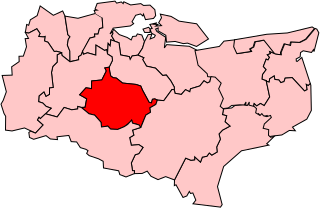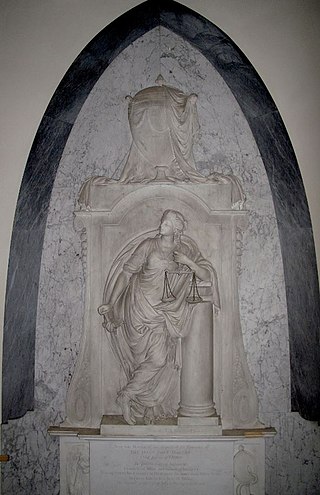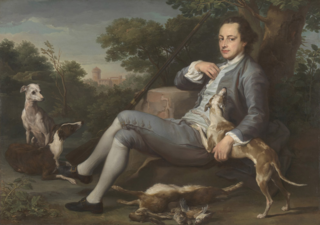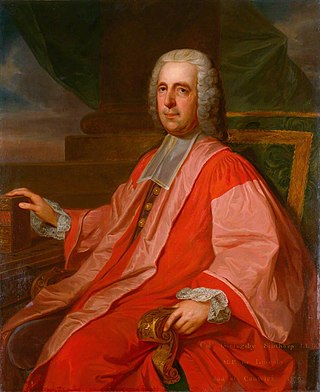
Maidstone was a parliamentary constituency represented in the House of Commons of the Parliament of the United Kingdom.
Cambridge University was a university constituency electing two members to the British House of Commons, from 1603 to 1950.
East Looe was a parliamentary borough represented in the House of Commons of England from 1571 to 1707, in the House of Commons of Great Britain from 1797 to 1800, and finally in the House of Commons of the United Kingdom from 1801 until its abolition in 1832. It elected two Members of Parliament (MP) by the bloc vote system of election. It was disenfranchised in the Reform Act 1832.
Cornwall is a former county constituency covering the county of Cornwall, in the South West of England. It was a constituency of the House of Commons of England then of the House of Commons of Great Britain from 1707 to 1800 and of the House of Commons of the United Kingdom from 1801 to 1832. It was represented by two Knights of the Shire, elected by the bloc vote system.

John Morton was an English lawyer and Tory politician who sat in the House of Commons between 1747 and 1780.
The UK parliamentary constituency of Seaford was a Cinque Port constituency, similar to a parliamentary borough, in Seaford, East Sussex. A rotten borough, prone by size to undue influence by a patron, it was disenfranchised in the Reform Act of 1832. It was notable for having returned three Prime Ministers as its members – Henry Pelham, who represented the town from 1717 to 1722, William Pitt the Elder from 1747 to 1754 and George Canning in 1827 – though only Canning was Prime Minister while representing Seaford.
Wallingford was a constituency in the House of Commons of the Parliament of the United Kingdom.
The 1768 British general election returned members to serve in the House of Commons of the 13th Parliament of Great Britain to be held, after the merger of the Parliament of England and the Parliament of Scotland in 1707.
The 1754 British general election returned members to serve in the House of Commons of the 11th Parliament of Great Britain to be summoned, after the merger of the Parliament of England and the Parliament of Scotland in 1707. Owing to the extensive corruption and the Duke of Newcastle's personal influence in the pocket boroughs, the government was returned to office with a working majority.
Bristol was a two-member constituency, used to elect members to the House of Commons in the Parliaments of England, Great Britain (1707–1800), and the United Kingdom. The constituency existed until Bristol was divided into single member constituencies in 1885.
Sudbury was a parliamentary constituency which was represented in the House of Commons of the Parliament of the United Kingdom.
Thomas Holmes, 1st Baron Holmes was a British politician who was Vice-Admiral and Governor of the Isle of Wight (1763–4) and sat in the House of Commons between 1727 and 1774. He managed elections in the government interest in the Isle of Wight during the 1750s and 1760s.
Newcastle-upon-Tyne was a parliamentary borough in the county of Northumberland of the House of Commons of England from 1283 to 1706, then of the House of Commons of Great Britain from 1707 to 1800 and of the House of Commons of the United Kingdom from 1801 to 1918. It returned two Members of Parliament (MPs), elected by the bloc vote system.
Penryn was a parliamentary borough in Cornwall, which elected two Members of Parliament (MPs) to the House of Commons of England from 1553 until 1707, to the House of Commons of Great Britain from 1707 to 1800, and finally to the House of Commons of the United Kingdom from 1801 to 1832. Elections were held using the bloc vote system.
Norfolk was a County constituency of the House of Commons of the Parliament of England then of the Parliament of Great Britain from 1707 to 1800 and of the Parliament of the United Kingdom from 1801 to 1832. It was represented by two Members of Parliament. In 1832 the county was divided for parliamentary purposes into two new two member divisions – East Norfolk and West Norfolk.

Sir James Creed was an English merchant and politician.

Humphry Morice was a Whig Member of Parliament for the Cornish parliamentary borough of Launceston from 2 February 1750 until 1780.

Coningsby Sibthorp DCL was an English Tory politician who sat in the House of Commons for the borough seat of Lincoln on variously between 1741 and 1768. Sibthorp was a member of the Sibthorp family of Canwick Hall in Lincolnshire which produced several Tory Members of Parliament between the early 18th-century and mid 19th-century, in addition to several botanists. Like the vast majority of Tory Members of Parliament during the Whig supremacy Sibthorp never held ministerial office, maintaining his political independence and Tory principles throughout his political career. On one occasion, however, Sibthorp did serve as the High Sheriff of Lincolnshire.
The Structure of Politics at the Accession of George III was a book written by Lewis Namier. At the time of its first publication in 1929 it caused a historiographical revolution in understanding the 18th century by challenging the Whig view that English politics had always been dominated by two parties.







